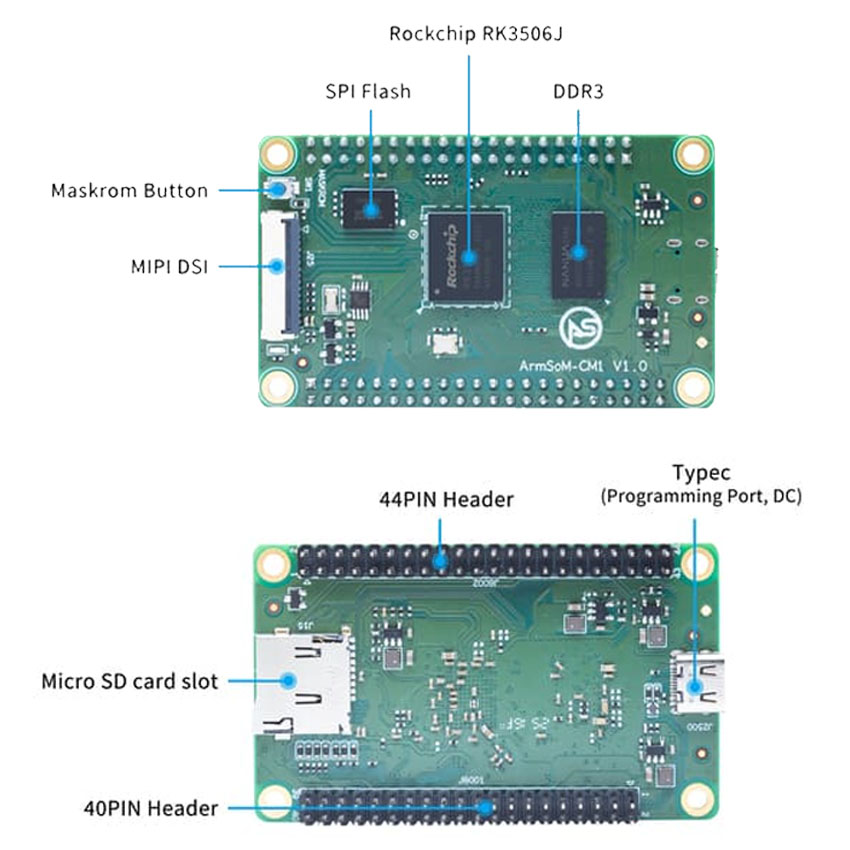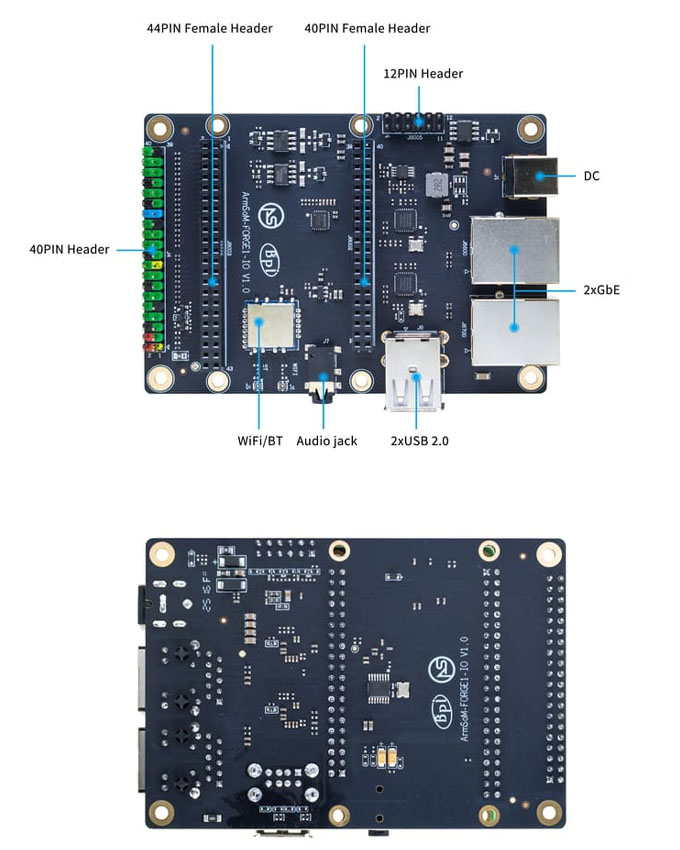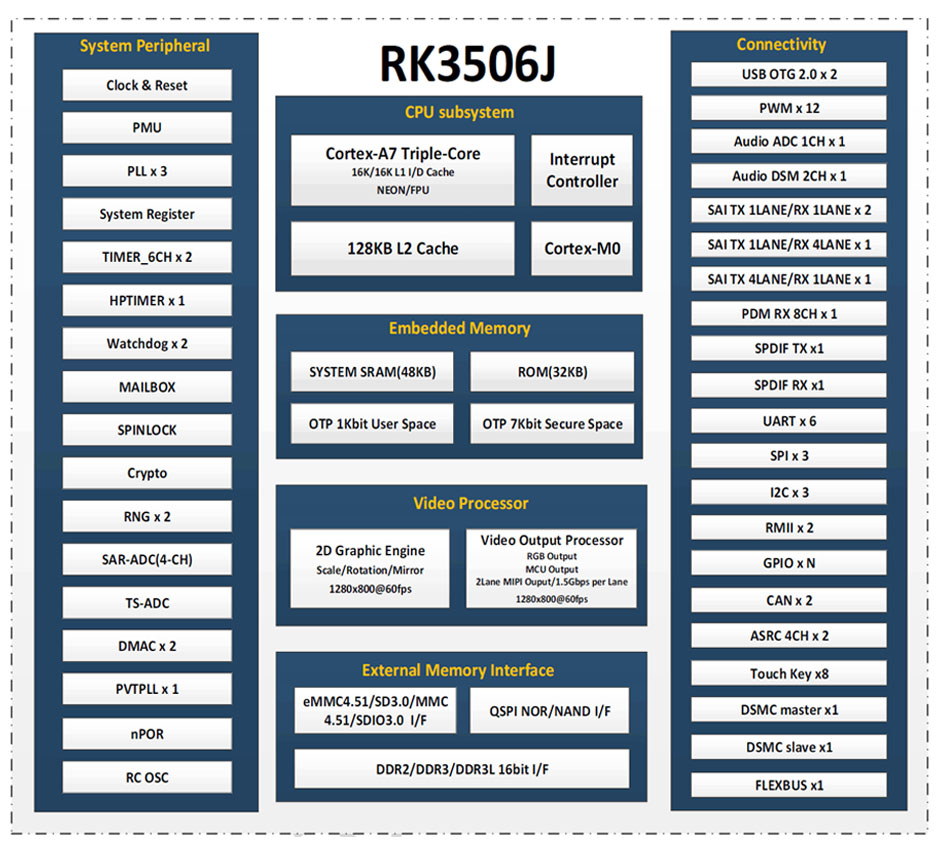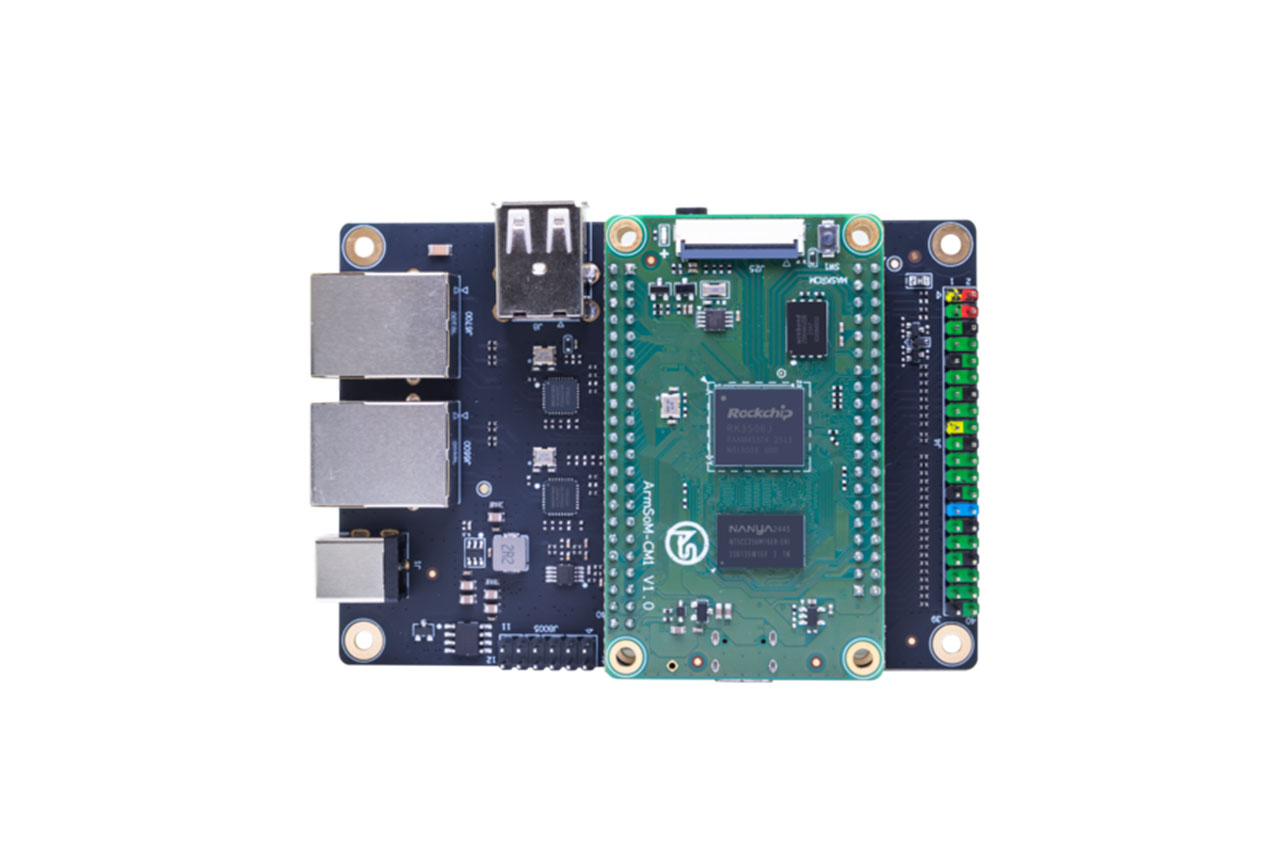ArmSoM has quietly introduced a new product called the CM1, a small computer-on-module that uses the Rockchip RK3506J and has three Cortex-A7 cores along with a Cortex-M0 microcontroller. The CM1 costs only $15, making it very affordable while still being fully functional.

ArmSoM CM1 specifications and features
Even though the CM1 is really tiny (just 70 x 42 mm), it has plenty of options for connecting. It comes with vital interfaces such as SAI, USB 2.0 OTG, RMII Ethernet, CAN, MIPI-DSI for screen displays, a Type-C port for power and programming, and also supports SD cards. When used with the optional CM1-IO carrier board, it adds even more features like dual 10/100 Mbps Ethernet connections, dual USB 2.0 ports, built-in Wi-Fi (802.11ac) with Bluetooth 4.2, audio jacks, and plenty of GPIO pins.

For software, ArmSoM provides a complete development package. This includes example circuit diagrams, 3D models, factory images based on Buildroot, BSPs, toolchains, and drivers for peripherals, all available as open-source on their GitHub repository. This helps business developers get their products to market faster.
The combination of being inexpensive, modular, and having open-source tools makes the ArmSoM CM1 a strong option for industrial control systems, human-machine interfaces, smart appliance displays, and data-focused embedded applications. You can also check other Rockchip-based SBCs like the DongshanPi and the Geniatech XPI-3576 for your reference.

Price and Availability
At the time of writing, the ArmSoM CM1 is already available on ArmSoM’s official store. The standalone computer on module is priced at $15, while the bundle with the CM1-IO carrier board costs around $28.50. The company states that it will be available on its AliExpress store soon. You can access both options now and send them out right away. ArmSoM has also assured that they will keep making it for a long time, with production promised at least until July 2035. This means the CM1 is a dependable option for developers and projects in industries that need a stable product with long-lasting support.
